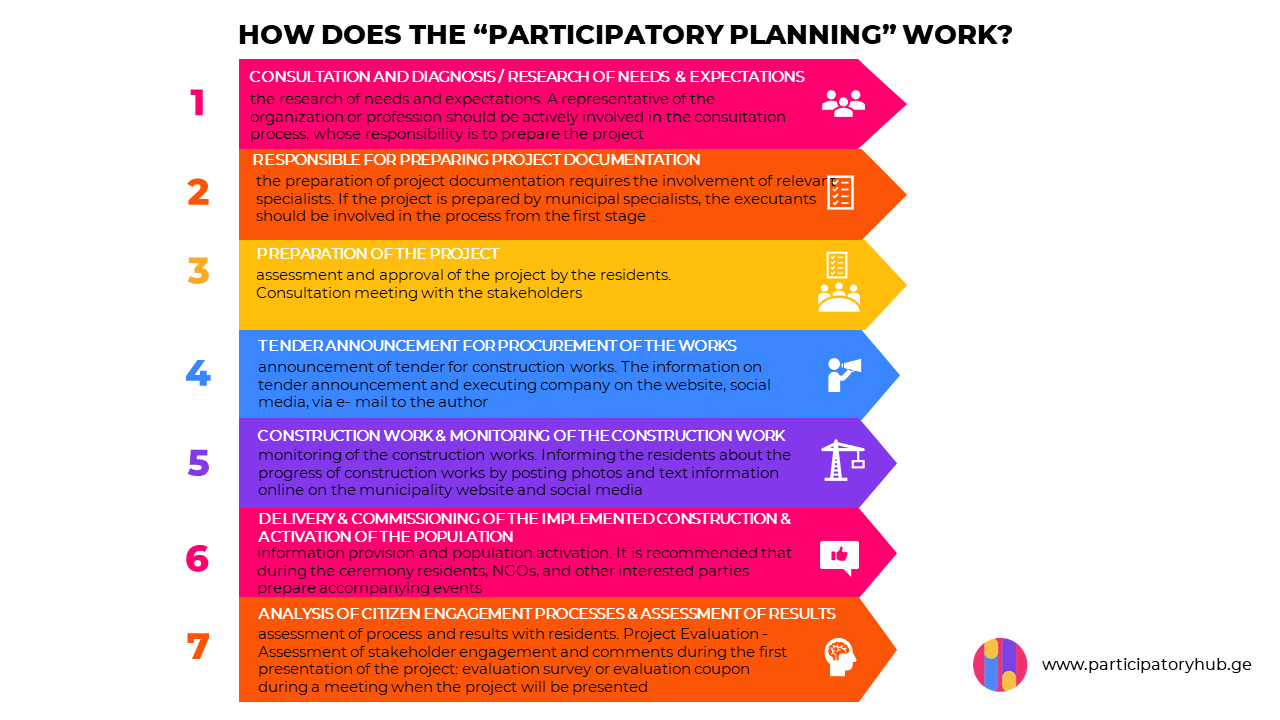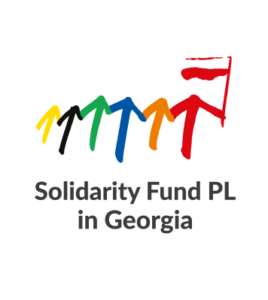The ‘’Participatory Planning” is one of the types of intervention in the development of the state, when the population and interested citizens are involved in all the stages of the project implementation. They make their own decisions on the technical aspects of the project, such as: unctional analysis, architectural and design solutions, construction volumes and other details of the project tobject.
What is the “Participatory Planning”?
The “Participatory Planning” is mainly used in the planning and reconstruction of public utilities.
Quote – “Act and you will change your city”.
How does the “Participatory Planning” work?

Would you like to learn more about the “Participatory Planning”?
MUST KNOW – What do you need to know to start a “Participatory Planning” in your community?
Why should we choose the “Participatory Planning” method?
The “Participatory Planning” allows maximum satisfaction of the needs and expectations of potential users and the population. Ensures that each group’s interest is taken into account at the project implementation stage and at a detailed level of the project. Thanks to this method, which is focused on the outcome, you can eliminate potential conflicts and increase user satisfaction.
What project is possible to use with the “Participatory Planning”?
A “Participatory Planning” method is a design that takes customer engagement and survey into account and fits the needs of the stakeholder, even if such a potential user is only one person or one social group. Mainly, the “Participatory Planning” is used in the planning and reconstruction of public facilities. When the interests of several functions and social groups intersect.
This method can be used for any project when the interests of several functions and social groups intersect. In particular, it is used and works well in planning public spaces, such as parks, but also can be used in development plans and public services.
Is it possible to implement the ”Participatory Planning” in my municipality?
It can be implemented in all municipalities and all settlements, be it a city, district centre, village, small town or another type of settlement.
Examples can be found in Ozurgeti and Marneuli municipalities.
What influence does the involvement of officials have on the final decision?
The ‘’Participatory Planning” is a substantively democratic process in which each participant has voting right in making decisions. The final decision is worked out by the residents.
The importance of votes shall not be determined by public, social and official status. Priority may be given to the following social groups such as children, the elderly, and the people with disabilities.
Is it possible to implement the “Participatory Planning” if there is no additional budget for it?
The “Participatory Planning” is a complex process and requires appropriate knowledge and experience. However, to ensure the minimum involvement of the population, it is possible to implement it without additional budget. Minimal involvement may be a population survey, or a public presentation of a sketch project.
Why will the investor take into account the decisions made with the involvement of the citizens?
The goal of any investment is a successful operation, and the success of public spaces is directly proportional to how busy and active the space is. Surveying and engaging the potential customers in the processes is the best guarantee for their future activity.
Is the P”articipatory Planning” legal?
The ‘’Participatory Planning” is a legitimate process. Moreover, the obligations of the Association Agreement of Georgia ( EU/ Georgia Association agreement) provides the participation of the population.
How much money is needed to implement the „Participatory Planning”?
The cost of the “Participatory Planning” depends on the scale of the project, the function and the number of people affected by the project. Its cost is calculated based on the working time of the persons involved in the processes, the mandatory number of the meetings with the population, the technical needs and the information campaign resource.
What additional resources are needed to implement the “Participatory Planning”?
For the implementation of the “Participatory Planning”, it is necessary to have an architect / landscape designer and a cost estimator, i.e. a person who will calculate the cost of future work.
How much time is it required for the implementation of the ‘’Participatory Planning”?
The legislation does not set deadlines. However, based on the practices, the implementation time of the “Participatory Planning” varies from three to six months, i.e. before the practical implementation of the project, and it should be completed before the approval of the annual budget, to avoid the need of the budget change.
Are you interested in learning more?
Take courses
External Learning and Engagement Opportunities
– More info about Academy of Participation



